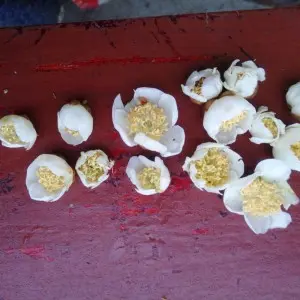Dec . 22, 2024 22:50 Back to list
Service for Collecting Apricot Pollen Efficiently and Effectively for Better Harvests
Collecting Apricot Pollen A Vital Service for Pollination and Agriculture
In the world of agriculture, pollination plays an essential role in determining the success of fruit production. Among the various flowering plants, the apricot tree (Prunus armeniaca) stands out not only for its delicious fruit but also for its intriguing pollination requirements. The act of collecting apricot pollen is more than just a horticultural task; it is a vital service that supports fruit production, biodiversity, and agricultural sustainability.
The Importance of Pollination
Pollination is the transfer of pollen from the male anthers of a flower to the female stigma. This crucial process leads to fertilization and the production of fruit and seeds. For apricot trees, which are typically self-pollinating, cross-pollination with a genetically different apricot variety can enhance fruit set and improve overall fruit quality. This brings to light the importance of pollinator species such as bees, which help facilitate this process efficiently.
Understanding Apricot Pollen
Apricot pollen is unique in its composition, making it highly nutritious. It contains protein, fats, and essential vitamins that are beneficial not only for the apricot trees but also for pollinators. The peculiar structure of apricot pollen grains, with their rough outer coating, stands as a testament to the tree’s evolutionary adaptations to ensure successful reproduction. When collecting apricot pollen, it's essential to manage and preserve its integrity to maximize its efficacy during the pollination season.
The Collection Process
Collecting apricot pollen is a meticulous process that requires knowledge, timing, and technique. The pollen is typically collected when the apricot flowers are in full bloom. This is the optimal time for harvest as the anthers release their pollen granules, which can then be carefully gathered using specialized tools.
1. Preparation Before collecting pollen, it's crucial to prepare the environmental conditions. A calm day with clear skies is ideal, as wind can disrupt the process, causing pollen to disperse prematurely. 2. Identifying the Right Trees Selecting the healthiest and most productive apricot varieties ensures that the collected pollen is of high quality. Monitoring the trees for signs of flowering will help determine the optimal time for collection. 3. Collection Techniques Hand-held pollen collectors or vacuum devices can be effective in gathering pollen. Care must be taken to avoid damaging the flowers during the collection process, preserving the potential for subsequent fruit production.
The Role of Technology
collect apricot pollen service

Advancements in agricultural technology have transformed the way pollen is collected and used. Automated pollen collection systems, along with drones equipped with sensors, are emerging trends in modern agriculture. These technologies enhance efficiency, increase the volume of collected pollen, and ensure that specific pollen types can be targeted based on farm needs.
Communal and Environmental Impacts
Collecting apricot pollen is not merely an agricultural practice; it has profound implications for the environment. By understanding the intricacies of pollination, farmers and land managers can boost not only apricot production but also support local ecosystems. Pollinators contribute significantly to biodiversity, and as apricot trees thrive, they provide habitats and food sources for various species.
Moreover, community engagement in pollen collection initiatives can foster a sense of environmental stewardship. Educating local populations about the importance of pollination can lead to greater efforts in conservation practices, ensuring that pollinator populations remain healthy and robust.
Challenges and Solutions
Despite its significance, collecting apricot pollen faces challenges, such as climate change, which disrupts flowering times and pollinator activity. Additionally, the decline in pollinator populations due to habitat loss and pesticide use poses a threat to successful pollination.
To combat these challenges, promoting sustainable agricultural practices is crucial. This includes integrating more biodiversity into farming systems, minimizing chemical inputs, and establishing pollinator-friendly habitats. Encouraging organic farming methods and the use of cover crops can also significantly enhance pollinator health.
Conclusion
The act of collecting apricot pollen is a small yet integral part of a much larger agricultural ecosystem. This vital service ensures that apricot trees produce healthy fruit while supporting the biodiversity necessary for sustainable farming. As we continue to explore and enhance our understanding of pollination, we must prioritize the protection and support of both our food systems and the pollinators that sustain them. Through collective efforts, we can ensure that the sweet taste of apricots—and the ecological balance they represent—remains a staple for generations to come.
-
High-Quality Oak Pollen for Allergy Research & Testing – Reliable Oak Tree & Live Oak Pollen Supplier
NewsJul.08,2025
-
Premium Pear Pollen for Pollination in Orchards in Taiwan – Reliable Factories, Manufacturers & Suppliers
NewsJul.08,2025
-
Premium Pollen Producer & Apricot Pollen Suppliers High-Quality Apricot Pollen Factories
NewsJul.07,2025
-
Premium Juniper Tree Pollen for Fruit Tree Varieties – Quality Assured by Leading Plum Pollen Manufacturers
NewsJul.07,2025
-
High Quality Elm Pollen Supplier - Fresh Elm Tree & Apricot Flower Pollen for Sale
NewsJul.07,2025
-
Premium Cherry Pollen for Sale – Fresh Cherry & Avocado Tree Pollen Supplier
NewsJul.06,2025